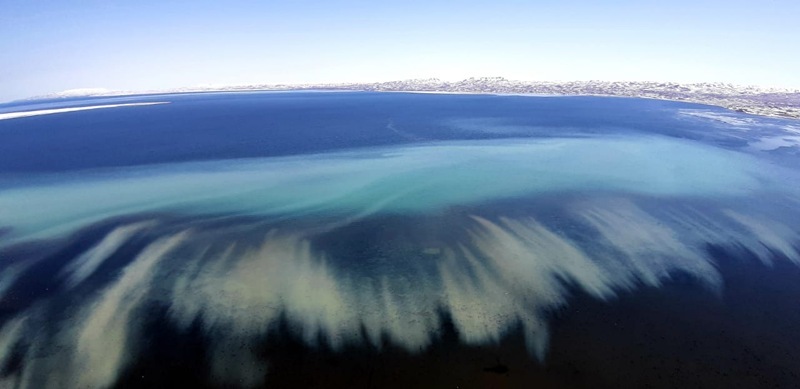Scientists of the Kamchatka branch of the All-Russian Scientific Research Institute of Fisheries and Oceanography (KamchatNIRO) have completed an important stage of aerial surveys to assess the reserves of Corfo-Karaginsky herring. These studies are being conducted in the Karaginsk subzone, which is of key importance for fishing in the Far East. The Korfo-Karaginsky herring is one of the most important fishing facilities for the region, and the specialists of KamchatNIRO have been continuously monitoring its condition for more than eighty years.

Forecasts of the population status of this valuable fish are traditionally based on data obtained during two key periods: during spawning in May and during the feeding and wintering period from November to December. At the same time, aerial surveys of spawning grounds in the spring play a crucial role in the assessment, as they allow direct monitoring of the spawning process.
During the current expedition, the scientists were faced with the tasks of conducting aerial visual accounting of spawning accumulations, assessing the intensity of laying eggs and the total size of the spawning stock. In addition, experts determined the biological characteristics of herring and investigated the conditions of its reproduction in specific areas.
Semyon Veselov, head of the expedition and a senior specialist at the marine fish laboratory, reports that during almost ten hours of helicopter flight, specialists examined the main spawning grounds. These sites are located in the bays of Corfu, Ouala and Anapa. During the work, samples of spawning substrate, such as seagrasses, with caviar deposited on it were collected, and the necessary hydrological studies were performed to assess environmental conditions.
According to preliminary estimates by experts, the first approaches of herring to spawning sites, as well as the spawning process itself, began on May 6-7. The largest concentrations of fish and, consequently, the most intensive spawning were recorded in Anapa Bay. The peak spawning of the Corfo-Karaginsky herring in the study area this year occurred on May 10, which approximately corresponds to the average annual data and the timing of the spawning campaign in 2024.
Currently, all the materials and samples collected during the air survey are at the stage of in-house processing and analysis in the Institute’s laboratories. The results obtained will form the basis for an assessment of the current state of the Corfo-Karaginsky herring stocks and a forecast of their development in the coming years. They will also be used to prepare a scientific justification for the total allowable catch of this fish in the Karaginsk subzone for 2027, which is necessary to ensure the sustainable and rational use of this important marine bioresource.